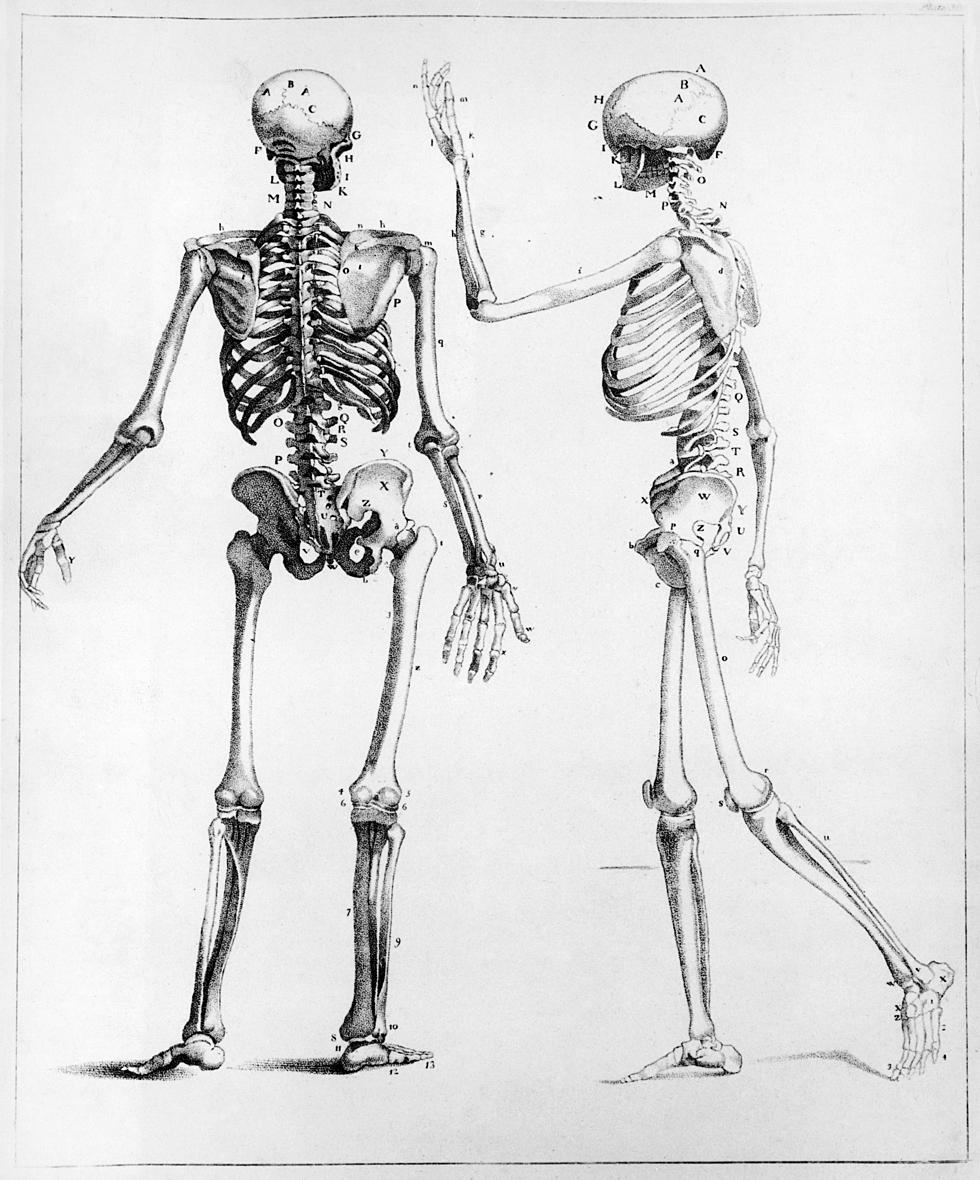
Friday Fun Facts About Our Skeletons
A diagram showing back and side views of the human skeleton, circa 1900. (Photo by Hulton Archive/Getty Images)
Bones have been used in music, TV shows, books and movies. They help us move around, we break them from time to time, but where would we be without them?
Fun Facts About Our Bones
- Babies are born with more bones than adults. That’s because over time and as we age our 300 starting bones fuse together and settle on the 206 most of us have.
- Our bones grow daily and usually reach maximum density about the time we reach 30 years of age.
- It’s no fun to break a bone but if you do our remarkable bodies re-grow, reconnect and repair us. Casts or splints are applied depending on the severity of the break to make sure the bones knit back properly.
- Unfortunately bones are not immune to a number of disorders and diseases. Osteoporosis weakens our bones and increases the risk of fractures, curvature of the spine is known as scoliosis and arthritis is an inflammatory disease that can damage joints.
- The femur is the longest bone in the body. It reaches from the hip to the knee. It can take up to 2,500 pounds of pressure without breaking. But if it does recovery can take several months.
- Now hear this. The smallest bone in your body is only 0.11 inches long and is the staples or stirrup bone in your middle ear.
- Bones, like skin, replaces itself over time. In the case of bones you get new ones about every seven years.
- The majority of your bones are located in the hands and feet. Together they make up more than half your bones. Twenty-seven in each hand, and 26 in each foot.
- There are differences in male and female skeletons. The female skeleton is smaller and the pelvic bones are at more of an angle to aid in childbirth.
- Bone Marrow makes up 4 percent of the human body mass and is a soft, flexible substance in the middle of the bone surrounded by a sponge like substance with holes to keep it light, then the dense strong outer layer.
- Bone Marrow produces red blood cells that carry oxygen and lymphatic system that supports the body’s immune system.
Some Final Thoughts
Thanks to medical research we can replace most of the bones in the body if needed. Shoulders, hips and knees are replaced on a daily basis.
Prosthetic limbs are also advancing. It may only be a short time before we can regrow knees or hips.
Three D printers are able to recreate many body parts including bones and other body parts.
Just in case you might want to bone up on some of your other bones after you finish reading this.
A diagram showing back and side views of the human skeleton, circa 1900. (Photo by Hulton Archive/Getty Images)
More From KMMS-KPRK 1450 AM



![[POLL] Will You Got Back to Restaurants and Bars When They Open?](http://townsquare.media/site/8/files/2017/04/Adam-Berry.jpg?w=980&q=75)
![[POLL] Should wearing a mask in public be mandatory?](http://townsquare.media/site/8/files/2020/04/GettyImages-1213079528.jpg?w=980&q=75)
![[POLL] Will You Tune Into The Tom and Shane Saturday Show?](http://townsquare.media/site/8/files/2020/04/TomShaneFB.jpg?w=980&q=75)

![[POLL] Will The Tourists Return To Montana?](http://townsquare.media/site/119/files/2019/04/Tourism-1.jpg?w=980&q=75)

